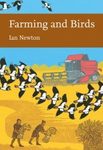About this book
Language: French
Agricultural environments, artificial though they are, are home to complex biodiversity. They host both species that affect the health of crops (weeds, insect pests, pathogens, etc.) and others, called auxiliaries, which regulate these pests, as well as pollinating species that directly contribute to production. Through their beneficial effects on crops, these auxiliary and pollinating species contribute to functional biodiversity on which agriculture is increasingly relying for sustainable production.
The management of functional biodiversity has long been thought of only at the plot level. However, such boundaries are porous and many species exploit resources outside cultivated plots and move during a growing season, or from one year to another, depending on the location of the crops in the agricultural landscape. The more global scale of the landscape is therefore essential for organizing cultivated and uncultivated habitats in space and time, and managing the desired functional biodiversity. How then can we best organize landscapes most profitably? How do you implement this? These are the new avenues of research in agroecology that the authors of this book detail and evaluate here.
This multidisciplinary book takes stock of theoretical knowledge, research approaches, and experimental work relating to the response of pests, auxiliaries and pollinators to spatial and temporal organization of the landscape. It also presents concrete case studies aiming at concerted management of landscapes for crop health. The aim is not only to give the reader the main findings on this issue but also the keys to take a step back.
Summary in French:
Les milieux agricoles, tout artificiels qu’ils soient, abritent une biodiversité complexe. Ils hébergent tant des espèces qui affectent la santé des cultures (plantes adventices, insectes ravageurs, pathogènes…) que d’autres, dites auxiliaires, qui régulent ces bioagresseurs, ou des espèces pollinisatrices contribuant directement aux productions. Par leurs effets bénéfiques sur les cultures, ces espèces auxiliaires et pollinisatrices participent à une biodiversité fonctionnelle sur laquelle l’agriculture cherche de plus en plus à s’appuyer pour produire de manière durable.
La gestion de la biodiversité fonctionnelle a longtemps été seulement pensée à l’échelle de la parcelle. Les limites sont pourtant poreuses et de nombreuses espèces exploitent des ressources en dehors de la parcelle cultivée et se déplacent au cours d’une saison de culture, ou d’une année à l’autre, selon la localisation des cultures dans l’espace agricole. L’échelle bien plus globale du paysage est ainsi essentielle pour organiser dans l’espace et dans le temps les habitats cultivés et non cultivés, et gérer la biodiversité fonctionnelle recherchée. Comment donc concevoir au mieux les organisations paysagères les plus profitables ? Comment mettre cela en œuvre ? Ce sont les nouveaux axes de la recherche en agro-écologie que les auteurs de cet ouvrage se proposent de détailler et d’évaluer ici.
Cet ouvrage pluridisciplinaire fait le point sur les connaissances théoriques, les démarches de recherche et les principaux travaux portant sur la réponse des bioagresseurs, des auxiliaires et des pollinisateurs à l’organisation spatiale et temporelle du paysage. Il présente aussi des cas d’études concrets visant une gestion concertée de paysages pour la santé des cultures. L’objectif est non seulement de donner au lecteur les principaux résultats sur cette question mais également les clés pour prendre du recul.
Contents
Préface
Gestion multi-échelle de la biodiversité fonctionnelle pour une agriculture durable
Partie 1. Structuration et fonctionnement écologique des paysages agricoles
Introduction
Chapitre 1. Agriculture et paysage : d’une gestion individuelle de la production vers une gestion collective de la biodiversité fonctionnelle
Chapitre 2. La biodiversité dans des paysages spatialement et temporellement hétérogènes
Chapitre 3. D’une description structurelle à la prise en compte d’un paysage agricole fonctionnel
Chapitre 4. Caractériser les paysages agricoles
Chapitre 5. Analyses statistiques des relations entre mosaïque paysagère et processus écologiques
Partie 2. Paysage et santé des plantes : un état des connaissances
Introduction
Chapitre 6. Caractéristiques écologiques des organismes impliqués dans la régulation naturelle et la pollinisation
Chapitre 7. Paysages, bioagresseurs, ennemis naturels et niveaux de régulation biologique
Chapitre 8. Les réseaux d’interactions dans les paysages agricoles
Chapitre 9. Paysages, pollinisateurs et niveaux de pollinisation
Partie 3. Vers la conception de paysages agricoles multifonctionnels
Introduction
Chapitre 10. Aménagement de paysages pour la santé des plantes basé sur des modèles
Chapitre 11. Vers une co-conception de paysages pour la santé des plantes et avec des acteurs du territoire
Chapitre 12. Vers des paysages agricoles multifonctionnels
Des avancées majeures
Pour les paysages de demain
Glossaire
Liste des auteurs
Customer Reviews





![Paysage, Biodiversité Fonctionnelle et Santé des Plantes [Landscape, Functional Biodiversity and Plant Health] Paysage, Biodiversité Fonctionnelle et Santé des Plantes [Landscape, Functional Biodiversity and Plant Health]](http://mediacdn.nhbs.com/jackets/jackets_resizer_xlarge/25/253537.jpg?height=620)
![Paysage, Biodiversité Fonctionnelle et Santé des Plantes [Landscape, Functional Biodiversity and Plant Health]](http://mediacdn.nhbs.com/jackets/jackets_resizer/25/253537.jpg)
















![Poissons de l'Océan Indien Et de la Mer Rouge [Fishes of the Indian Ocean and Red Sea]](http://mediacdn.nhbs.com/jackets/jackets_resizer_medium/20/200808.jpg?height=150&width=94)
![Arbres, Arbustes et Lianes d'Afrique de l'Ouest [West African Trees, Shrubs and Lianas]](http://mediacdn.nhbs.com/jackets/jackets_resizer_medium/24/246252.jpg?height=150&width=100)

![Grenouilles, Crapauds & Cie: Parlez-Moi d'Anoures… [Frogs, Toads & Co.: Tell Me about Anurans...]](http://mediacdn.nhbs.com/jackets/jackets_resizer_medium/23/238491.jpg?height=150&width=131)
![Les Maladies Émergentes: Épidémiologie chez le Végétal, l'Animal et l'Homme [Emerging Diseases: Epidemiology in Plants, Animals and Humans]](http://mediacdn.nhbs.com/jackets/jackets_resizer_medium/23/237748.jpg?height=150&width=97)
![Oiseaux et Changement Global: Menace ou Aubaine? [Bird and Global Change: Threat of Windfall?]](http://mediacdn.nhbs.com/jackets/jackets_resizer_medium/22/224993.jpg?height=150&width=132)
![Les Termites dans le Monde [Termites of the World]](http://mediacdn.nhbs.com/jackets/jackets_resizer_medium/18/182815.jpg?height=150&width=85)
![Les Invertébrés Marins du Golfe de Gascogne à la Manche Orientale: Guide d'Identification des Èspeces Recoltées dans les Chalut [Marine Invertebrates of the Bay of Biscay at the Eastern Channel: Identification Guide for Trawl-Harvested Species]](http://mediacdn.nhbs.com/jackets/jackets_resizer_medium/18/183611.jpg?height=150&width=100)
![Les Orchidées Sauvages de Paris [The Wild Orchids of Paris]](http://mediacdn.nhbs.com/jackets/jackets_resizer_medium/17/179793.jpg?height=150&width=85)
![Les Insectes du Monde [Insects of the World] (2-Volume Set)](http://mediacdn.nhbs.com/jackets/jackets_resizer_medium/25/255244.jpg?height=150&width=235)

![Identification des Poissons par Leurs Otolithes en Imagerie 3D: Manche et Mer du Nord [Identification of Fishes by Their Otoliths in 3D: English Channel and North Sea]](http://mediacdn.nhbs.com/jackets/jackets_resizer_medium/26/265325.jpg?height=150&width=85)